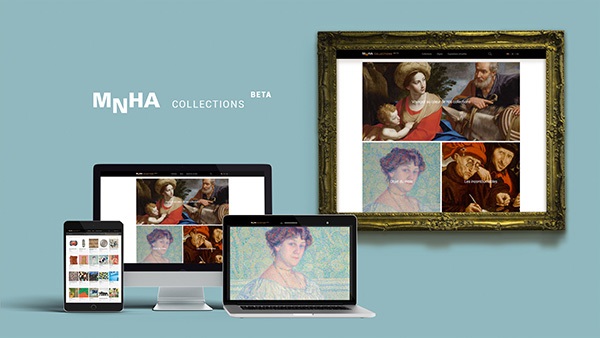 Credit: MNHA
Credit: MNHA
The Luxembourg Museum of National History and Art (MNHA) has launched its new digital platform: MNHA Collections.
MNHA Collections, launched on Monday in the presence of Minister of Culture Sam Tanson and government advisor Marianna Backes (in charge of the digital strategy for cultural institutes), is a digital publication platform allowing users to consult the museum’s current collections online.
In 2017, the Ministry of Culture began working on a digital service for the national cultural heritage and, under the responsibility of the government adviser Marianne Backes, began to develop a digitisation strategy for the various cultural institutes under its supervision. The MNHA is one of the first museums in the country to implement this strategy by developing a new internal database dedicated to the management of its collections and its activities (MuseumPlus RIA) and by setting up an open source portal allowing the online publication of its collections (MNHA Collections). At the same time, the MNHA is carrying out two digitisation projects, one dedicated to Luxembourgish currencies and the other to Luxembourgish art from 1945 to the present day.
The trilingual (English, French and German) MNHA Collections platform offers filtered metadata, access to virtual exhibitions and a search engine. It is based on the open source software Goobi Viewer developed by the German company Intranda, a company renowned for its know-how acquired on projects similar to that of the MNHA such as the website Kulturerbe Niedersachsen. For security reasons and to maintain a high level of flexibility, MNHA Collections operates independently of the museum's internal database.
The platform is powered by XML files compliant with the Lightweight Information Describing Objects (LIDO) standard. Developed by the LIDO working group of the International Committee for Documentation of the ICOM (International Council of Museum), the standard has played an important role in publishing data on the Europeana platform.
MNHA Collections not only uses a widely recognised format for publishing metadata, but also uses advanced technologies for viewing digitised objects. The International Image Interoperability Framework (IIIF) refers to both a community and a set of technical specifications whose purpose is to define an interoperability framework for the dissemination and exchange of high-resolution images on the Web. IIIF technology defines common interfaces that provide a standardised method for describing and accessing images on the Web, as well as displaying descriptive and descriptive metadata. The IIIF will also facilitate collaboration, for example with the Centre for Contemporary and Digital History (C2DH) of the University of Luxembourg on a project dedicated to the analysis of the reception of digital interfaces of cultural institutions by users.
In order to improve its new platform and digital strategy in the future, the MNHA will host workshops for adults on 8 and 29 June 2019. The MNHA Design Jam
Workshops offer an opportunity to receive an overview of the museum collections, participate in the design process and create links with other creative thinkers. No design or technical experience is necessary. During the workshop, participants will explore MNHA collections online, collaborate with the group to generate new ideas and build their own prototype museum experience.
This event will be moderated by Christopher Morse, doctoral researcher at the University of Luxembourg, and will be in English (French translation). In return, participants will receive a €40 Amazon Gift Card and two tickets for the museum. Registration: servicedespublics@mnha.etat.lu.








